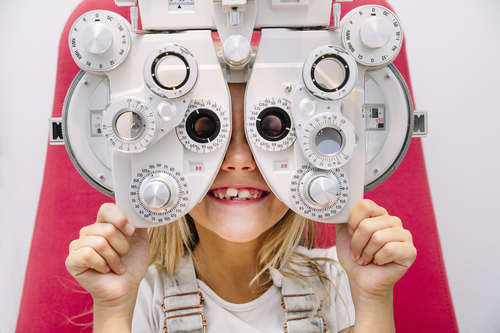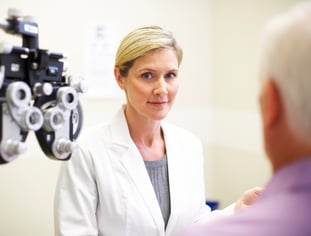Exploring the most up to date Technical Developments in Optometry and What They Mean for Optometrists
In the ever-evolving area of optometry, recent technological improvements are reshaping how specialists come close to eye treatment. From the accuracy of Optical Comprehensibility Tomography to the nuanced insights used by AI-driven analysis devices, these advancements are establishing new standards in patient analysis and therapy. Teleoptometry is positioned to redefine ease of access, guaranteeing that proficiency goes beyond geographical restrictions. As these developments permeate the method, optometrists are faced with the difficulty of embracing these devices to improve individual results. Yet, the concern remains: exactly how will these technical shifts redefine the duties and responsibilities within the career?
Innovations in Diagnostic Devices
Progressing the area of optometry, developments in diagnostic devices have reinvented the means eye treatment specialists analyze and identify aesthetic disabilities and eye conditions. The past years has actually observed significant technological innovations, enabling more extensive and precise assessments. Optical Comprehensibility Tomography (OCT), as an example, offers high-resolution cross-sectional images of the retina, allowing for the very early detection of illness such as glaucoma and age-related macular degeneration. This non-invasive imaging method has ended up being vital in contemporary optometric practice.
One more trick development is the intro of advanced corneal topography systems, which map the surface area curvature of the cornea with precision. These tools are specifically advantageous for suitable call lenses and diagnosing corneal problems. Additionally, electronic retinal imaging has transformed typical ophthalmoscopy, providing detailed, panoramic sights of the retina that help with comprehensive aesthetic examinations.
The development of wavefront aberrometry has actually likewise been crucial, allowing the evaluation of refractive mistakes with unmatched precision (Eye Doctor). This modern technology assists in personalizing rehabilitative lenses and enhancing medical outcomes for refractive surgeries. Collectively, these analysis advancements empower optometrists to supply remarkable patient care, ensuring very early treatment and tailored treatment approaches, ultimately boosting visual health results
AI in Individual Management
Building on the foundation of innovative analysis devices, the consolidation of expert system (AI) in client management stands for a transformative leap for optometry. AI systems are progressively utilized to enhance effectiveness, precision, and personalization in client treatment. By analyzing vast quantities of information, AI can recognize patterns and predict possible eye conditions, enabling optometrists to tailor treatments better. This capability is critical in handling chronic eye diseases such as glaucoma and diabetic person retinopathy, where early detection and continual monitoring are essential.
Additionally, AI-driven systems assist in streamlined person communications and administrative processes. Automated organizing, online assessments, and customized follow-up strategies not just enhance person complete satisfaction but likewise optimize time management for specialists. These systems can triage patients based on the urgency of their conditions, making sure that those in critical need receive punctual focus.
Moreover, AI enhances decision-making by giving optometrists with evidence-based suggestions and treatment pathways. By incorporating information from electronic health documents, AI tools use insights that inform medical decisions, minimizing the risk of errors and boosting patient outcomes. As AI remains to progress, its role in individual monitoring will likely expand, improving the landscape of optometric care.
Breakthroughs in Retinal Imaging
In the realm of optometry, retinal imaging has seen exceptional technical developments that are boosting analysis capabilities and patient treatment. Advancements such as Optical Comprehensibility Tomography (OCT) and fundus photography have actually revolutionized how eye doctors picture and assess the retina. OCT, specifically, gives high-resolution, cross-sectional photos of the retina, enabling the in-depth examination of its layers. This ability is vital for early detection and monitoring of conditions like glaucoma, diabetic person retinopathy, and age-related macular degeneration.
Enhanced imaging methods like OCT angiography are further refining diagnostic precision. This non-invasive technique maps blood flow in the retina, providing critical insights right into vascular health without the demand for dye injections. Additionally, adaptive optics innovation is being integrated right into retinal imaging systems to correct eye aberrations, delivering unprecedented picture clarity. Such developments promote the identification of minute retinal changes that could represent disease development.
Furthermore, innovations in artificial knowledge are enhancing retinal imaging by making it possible for automatic analysis of huge datasets. These systems help optometrists in recognizing patterns a sign of pathology, consequently boosting analysis accuracy website here and effectiveness. Collectively, these advancements are transforming retinal imaging right into a keystone of modern eye care, boosting results and increasing restorative opportunities.
Teleoptometry's Growing Duty
Teleoptometry is progressively coming to be a crucial part of eye treatment, driven by improvements in electronic communication and diagnostic tools. This is especially beneficial in underserved and rural locations where accessibility to specialized eye treatment is often minimal.
The combination of fabricated intelligence (AI) further boosts teleoptometry, allowing the analysis of visual data and helping in the detection of eye conditions such as glaucoma and diabetic retinopathy. AI-powered algorithms can swiftly translate complex imaging data, offering eye doctors with important insights that strengthen clinical decision-making.
In addition, teleoptometry sustains continuity of treatment with smooth combination with electronic health records (EHRs), permitting eye doctors to keep thorough client backgrounds. When seeking advice from with different professionals., this guarantees that people receive regular and tailored treatment also.
In spite of these advantages, challenges stay, including making sure data safety and managing client expectations. Teleoptometry represents a considerable stride towards more obtainable, efficient, and patient-centered eye treatment. As modern technology advances, its duty is poised to increase better.

Future Trends in Eye Treatment
A myriad of cutting-edge fads is readied to improve the future of eye treatment, driven by technological developments and the developing requirements of clients. One significant trend is the integration of expert system (AI) in diagnostics, which guarantees to improve the precision and performance of eye exams. AI formulas can examine huge amounts of data from retinal photos, possibly spotting conditions like diabetic person retinopathy and glaucoma earlier than standard methods.
Moreover, tailored medication is acquiring grip in optometry, with hereditary you can try these out testing notifying tailored treatment plans. This strategy aims to optimize person outcomes by tailoring treatments to private genetic accounts. Wearable innovation, such as smart call lenses, is additionally imminent, offering real-time surveillance of intraocular pressure or sugar levels, hence supplying continuous understandings into systemic and ocular wellness.
The fostering of augmented truth (AR) and virtual fact (VR) in training and patient education and learning is one more arising trend. These technologies use immersive experiences that can enhance understanding and abilities both for optometrists and people. As these trends progress, eye doctors need to stay abreast of technical improvements to offer cutting-edge treatment, guaranteeing better client end results and contentment in the dynamic landscape of eye care.
Conclusion

Jointly, these analysis improvements equip optometrists to supply remarkable client care, making certain very early intervention and customized therapy approaches, eventually improving aesthetic wellness end results.

As these technologies proceed to advance, optometrists should adjust and include why not try these out them into practice, eventually maximizing operations efficiency and raising the criterion of eye care delivered to individuals.